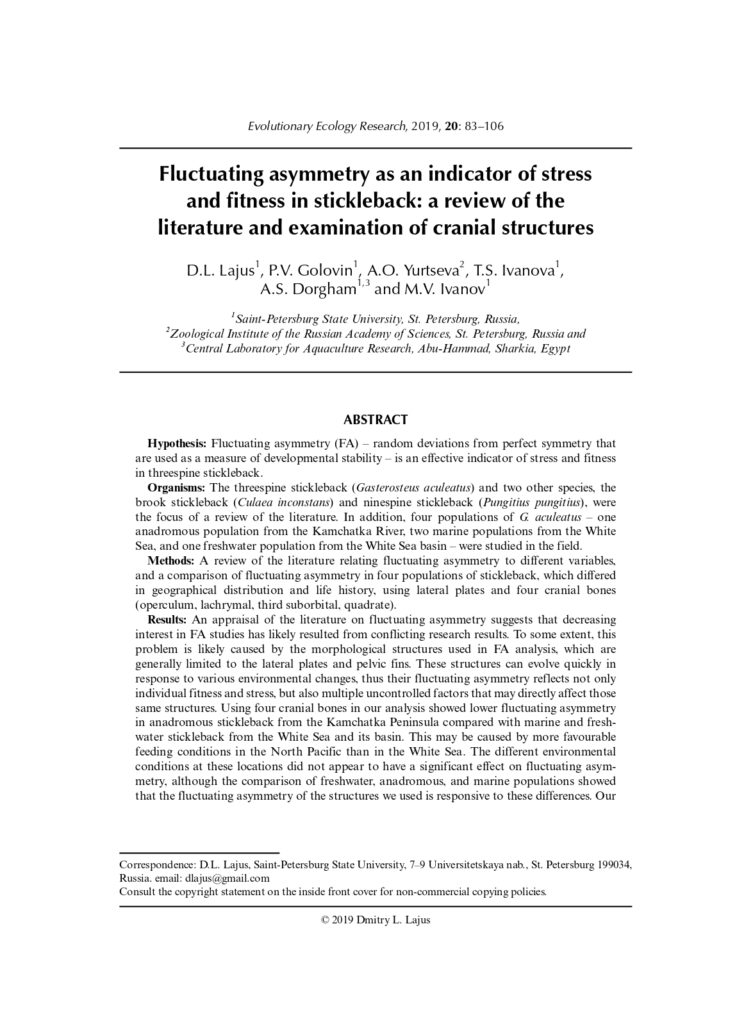Fluctuating asymmetry as an indicator of stress and fitness in stickleback: a review of the literature and examination of cranial structures
Lajus, D. L., Golovin, P. V., Yurtseva, A. O., Ivanova, T. S., Dorgham, A. S., & Ivanov, M. V.
Evolutionary ecology research (2019)
Lajus, D. L., Golovin, P. V., Yurtseva, A. O., Ivanova, T. S., Dorgham, A. S., & Ivanov, M. V. 2019. Fluctuating asymmetry as an indicator of stress and fitness in stickleback: A review of the literature and examination of cranial structures. Evolutionary Ecology Research, 20(1–3), 83–106.
Link to publication in the journal
Abstract
Using the threespine stickleback Gasterosteus aculeatus as a study object, we reviewed the opportunities of using fluctuating asymmetry, representing the random deviation of phenotype from a given developmental trajectory as stress and fitness indicator. For these purposes, an analysis of the literature on fluctuating asymmetry of this this species, as well as two other species of genus (brook stickleback Culaea inconstans, ninespine stickleback Pungitius pungitius) was carried out. Described is the variety of meristic and morphometric traits used for the analysis, the advantages and limitations reported by the researchers, and the peculiarities of the interpretation of the results obtained. We also perform our own analysis of samples of the threespine stickleback from the anadromous population of the Kamchatka River, two marine and one freshwater populations of the White Sea basin. For this, the fluctuating asymmetry was assessed in four paired cranial bones (operculum, lachrymal, third suborbital, quadrate), as well as lateral plates. A review of the literature allows us to conclude that the decline in interest in using fluctuating asymmetry as an indicator of stress and fitness for stickleback since the early 2000s was probably caused by unexpected results and absence of significant effects, as well as various uncontrolled environmental and genetic factors influencing the development of the traits. An analysis of the cranial structures in the threespine stickleback showed that anadromous fish from the Kamchatka River are characterized by the lowest levels of fluctuating asymmetry compared to marine and freshwater fish from the White Sea basin. These differences are likely due to the more favorable conditions for feeding and growth in the Pacific Ocean than in the White Sea. Although the observed differences in asymmetry levels do not allow to directly explain the observed differences by environmental conditions, a comparison of the considered populations indicates a potentially high sensitivity of the analysis, as well as the possibility of using the selected cranial structures for further research.
Keywords: cranial bones, fluctuating asymmetry, Gasterosteus aculeatus, literature review, threespine stickleback.


 8 (812) 321-32-79
8 (812) 321-32-79
About the author